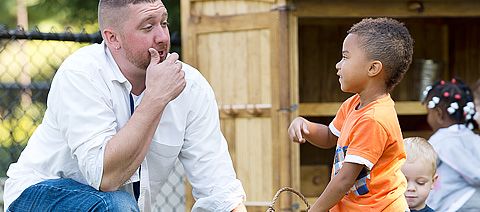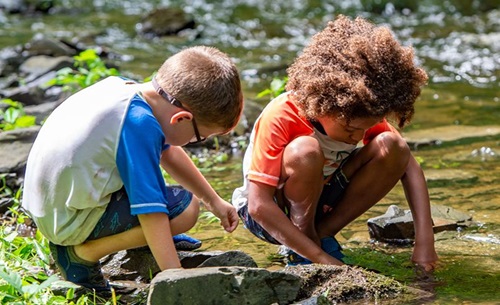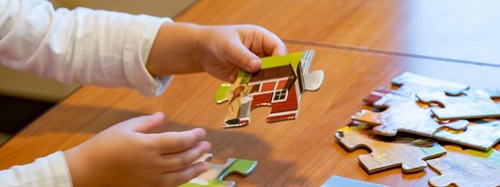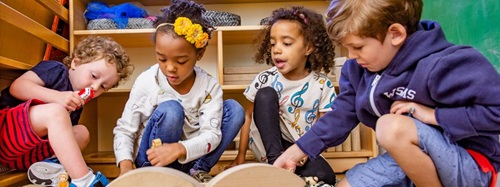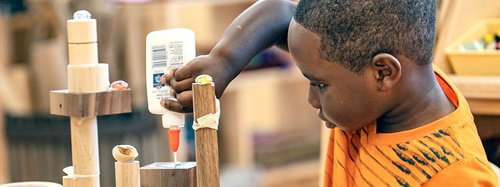The Teacher's Role in the Project Approach
| May 2013The teacher’s role in education is always complex, regardless of the subject matter or the age of the students. In general, the main focus is to help learners understand what they already know more deeply and accurately while strengthening their dispositions to continue learning throughout life.
In early and elementary education, “projects” are defined as extended in-depth investigations of phenomena in the children’s own environment that are worthy of learning more about. Project work provides a context in which the teacher can encourage learners to apply their growing academic skills in purposeful ways. The teacher has an important part to play in the initiation, implementation, and culmination of projects.
Initially, the teacher must determine the appropriateness of the topic to be investigated. Projects are productive and enlightening if the topic under investigation is interesting to most of the children. To achieve this, the teacher can benefit greatly from listening to children’s spontaneous discussions, observing their activities that often reveal their interests, and probing their thoughts. In addition, the teacher should make sure that many aspects of the topic are directly observable by the children. For example, a supermarket within walking distance of the school opens up many possibilities for first-hand investigations.
Once the teacher has identified a topic of potential interest to the children, she or he can engage the children in creating a topic web or list of related sub-topics. This process helps the children become aware of a wide range of options that could be included in the investigation of a topic—field trips, visiting experts, and so forth. The teacher facilitates the forming of small groups of children to investigate particular sub-topics that interest them. Forming small groups requires careful thinking by the teacher; the children must work well together and the group should include a range of abilities.
As the investigation proceeds, the teacher monitors the progress of each group and the whole class. The teacher can also remind the children of their earlier discussions about the progress of the project. She may encourage the small groups to share their findings with the entire class when she judges their progress to be of potential interest to their classmates. In many cases the teacher meets with the small group before their presentation to the whole class to rehearse with them how best to present their work to their classmates.
Many projects include opportunities for visiting experts to be invited to the class to share expertise by responding to the children’s questions. Before such a visit, the teacher discusses with the children what they want the visitor to talk about.
With the youngest children it does not usually help to ask them “What are your questions (for the visitor)?” It is usually more effective to ask the children questions like “What do you want the visitor (e.g. policeman) to talk about?” or “to show you?” Or “to tell you about?” When a child offers an answer, the teacher transforms the response into a question. The teacher may compile a list of questions in front of the children, saying that she will remind them about the questions during the expert’s visit.
Another important aspect of project work is creating representations of related topics and objects, such as observational drawings, sculptures, etc., depending on the ages of the children. The teacher has a key role in suggesting possible objects to represent and making available appropriate materials for the children to use.
The teacher is also essential to building a classroom culture of mutual assistance among the children. She may suggest to a child who is having some difficulties creating a cardboard construction representation that a particular classmate might be able to help because he or she has done similar things recently.
Another important role of the teacher is to link the project work with local, district, or state standards. Project work engages children in a wide range of literacy skills (depending on their ages) as well as many mathematical concepts and skills. For example, a kindergarten class did an extensive investigation of their school bus. Their work included one group counting the number of seats in the bus, another group measuring the length and width of the bus with a tied up collection of old neckties, and another group writing down all the signs they found, e.g. Exit, Open, Close, Warning, etc., and another group studying the inside and outside mirrors on the bus used by the drivers. In these sub-topic studies the children asked for help with counting and measuring, as well as reading signs and writing them down. The teacher must be aware of the knowledge the children gained and be able to communicate it as evidence of learning in an appropriate manner.
The teacher also helps determine when it is time to complete the project, and plan a culminating event. Even the youngest children will eventually feel that they have “had enough” of the topic. If, after watching and listening carefully to the children, the teacher feels they have reached this point, she (or he) might indicate at a group meeting that the topic may have been explored fully enough. Then it is a good time to plan a culminating event and to prepare some final documentation to help others appreciate what they have accomplished. Usually a culminating event is focused on reporting to the children’s parents what they have accomplished. Depending upon the ages of the children, the teacher can offer detailed assistance on how to present their work at a special meeting for their parents. In addition, the teacher can involve the children in preparing a written report or summary of their work and involve them in completing the documentation of the project. Parents and others in the school and community are invited to see the final report of their work and to appreciate the extensive effort, knowledge, and skills involved.

